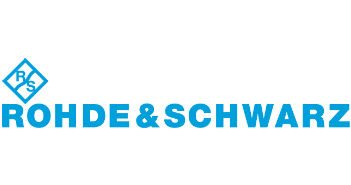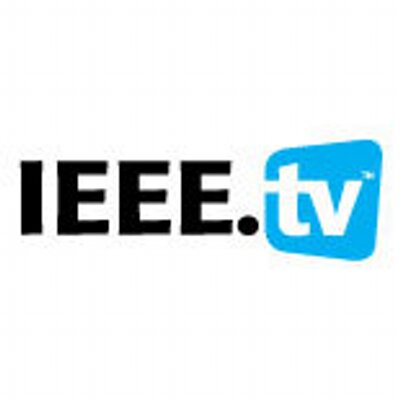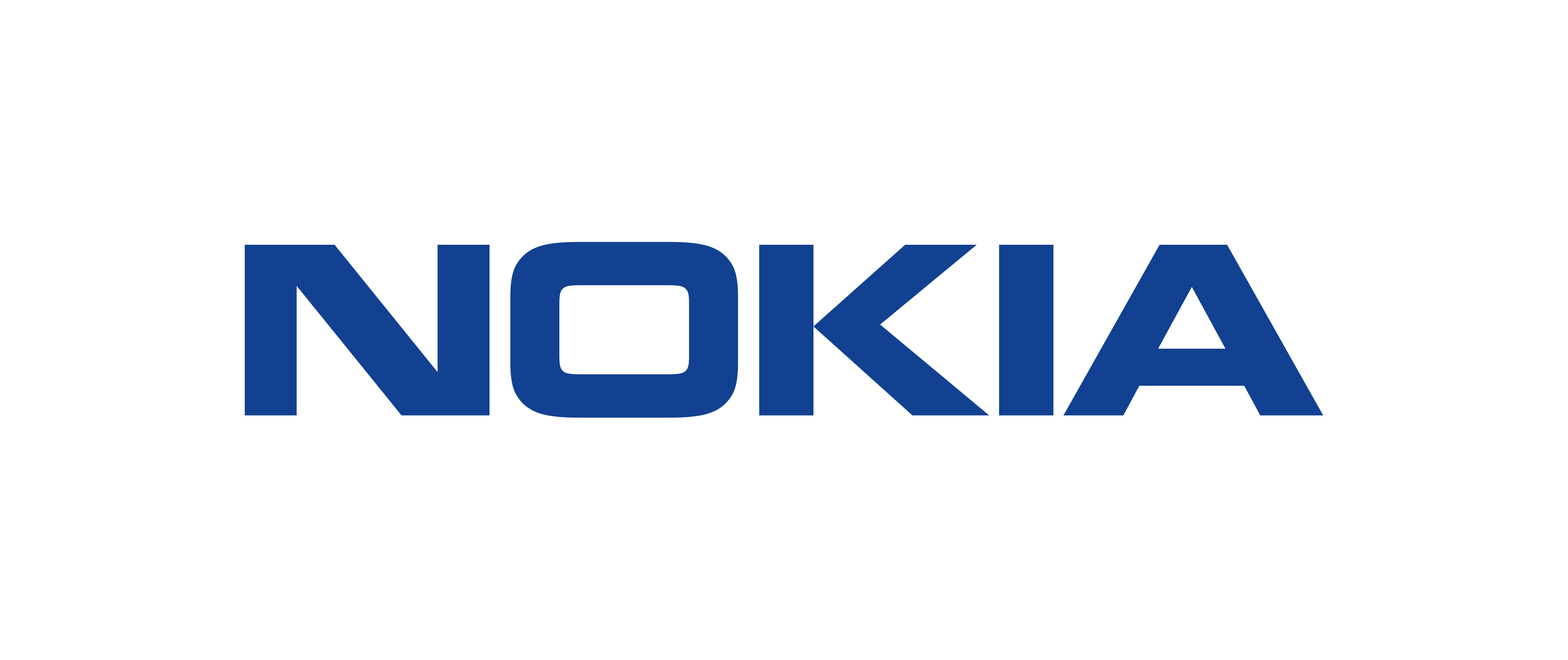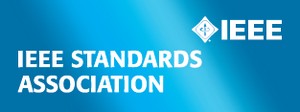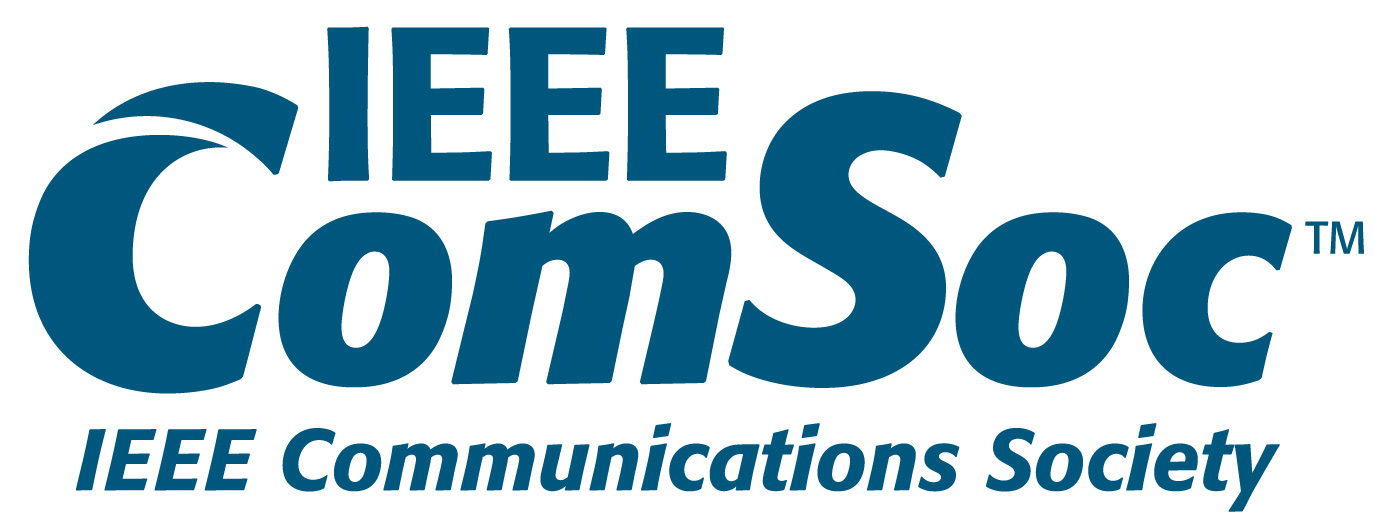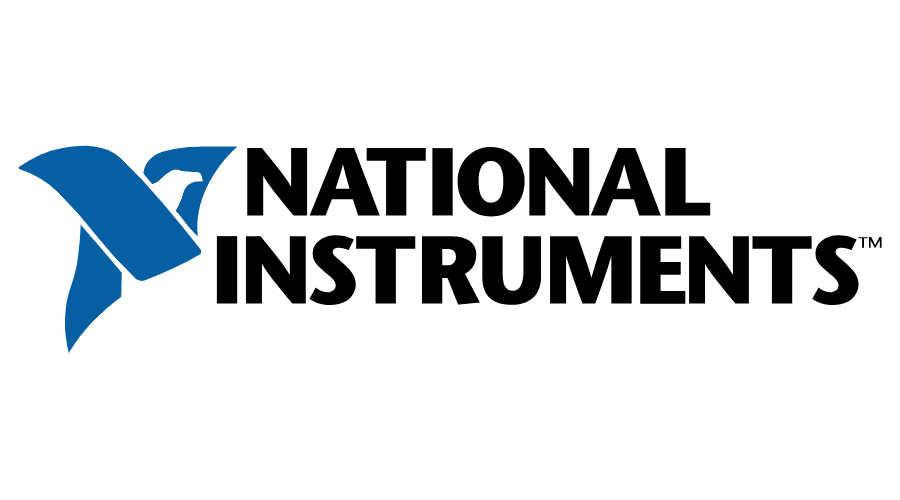2nd Workshop on 5G Technologies for Tactical and First Responder Networks

Monday, October 7, 2019
Time: 8:00 a.m. - 6:00 p.m.
Reception following from 6:00 p.m. - 8:00 p.m.
Location: The Johns Hopkins University Applied Physics Laboratory
11100 Johns Hopkins Road, Laurel, Maryland 20723-6099
Kossiakoff Center - Find on Google Maps
- Download the Program Booklet (PDF, 2M)
- Download the Schedule (PDF, 39k)
- View the Photos
- 2018 Workshop on 5G Technologies for Tactical and First Responder Networks
All Events
2021 IEEE 5G Workshop on First Responder and Tactical Networks (WFRTN)
2020 IEEE 5G Workshop on First Responder and Tactical Networks (WFRTN)
2019 IEEE 5G Workshop on First Responder and Tactical Networks (WFRTN)
2018 IEEE 5G Workshop on First Responder and Tactical Networks (WFRTN)
On this page:
Based on the success and feedback from the attendees of 2018 Workshop on 5G Technologies for First Responder and Tactical Networks and the importance and timeliness of this subject, JHU/APL is teaming up with IEEE Future Networks Initiative to organize this event on October 7, 2019 at JHU/APL campus in Laurel, Maryland for the second time.
Today, several standards organizations and forums, namely IEEE, 3GPP, and ITU, are working on defining the architecture and standardizing various aspects of 5G technologies. However, little has been studied to explore how 5G technologies can be useful to tactical and first responder networks. It is important to investigate how tactical and first responder communities can take advantage of 5G technologies to support massive bandwidth, massive sensing, and massive control type applications.
The 2019 workshop is scheduled to take place on Monday, October 7 at JHU/APL campus's Kossiakoff Center in Laurel, Maryland. This year's workshop will include plenary keynote talks, invited talks, exhibits, demos, panels and multiple parallel tracks covering mmWave, MIMO, Security, eHealth, Edge Automation, Systems Optimization, Applications, Testbed, Satellite, and Hardware. This workshop will also provide opportunities for sponsorships and exhibits. There will be ample opportunity to network with the industry professionals, researchers from R&D labs and universities, academics, government and regulators. If you have any questions about this workshop regarding speaking, sponsorship, or exhibit opportunities, please feel free to reach out to Ashutosh Dutta at This email address is being protected from spambots. You need JavaScript enabled to view it. or call at 908-642-8593.
Speakers  Mr. Jack L. Burbank earned his Bachelors of Science and Masters of Science degrees in Electrical Engineering from North Carolina State University in 1994 and 1998 respectively. Mr. Burbank currently is a senior wireless network engineer at Sabre Systems where he helps design, develop, and evaluate next-generation wireless capabilities for the US Army. Mr. Burbank is an expert in the areas of wireless networking, modeling and simulation, wireless system development, and wireless network security. Mr. Burbank has published over 50 technical papers on topics of wireless networking (both terrestrial-based and space-based), and contributed to multiple books related to wireless networking. Mr. Burbank has authored books on the subjects of Wireless Networking and Modeling and Simulation. Mr. Burbank is active within the IEEE acting as technical reviewer, organizer, chair, and associate technical editor for numerous IEEE conferences and periodicals. Mr. Burbank is editor of the Wiley-IEEE Press book series on IEEE standards.
Mr. Jack L. Burbank earned his Bachelors of Science and Masters of Science degrees in Electrical Engineering from North Carolina State University in 1994 and 1998 respectively. Mr. Burbank currently is a senior wireless network engineer at Sabre Systems where he helps design, develop, and evaluate next-generation wireless capabilities for the US Army. Mr. Burbank is an expert in the areas of wireless networking, modeling and simulation, wireless system development, and wireless network security. Mr. Burbank has published over 50 technical papers on topics of wireless networking (both terrestrial-based and space-based), and contributed to multiple books related to wireless networking. Mr. Burbank has authored books on the subjects of Wireless Networking and Modeling and Simulation. Mr. Burbank is active within the IEEE acting as technical reviewer, organizer, chair, and associate technical editor for numerous IEEE conferences and periodicals. Mr. Burbank is editor of the Wiley-IEEE Press book series on IEEE standards.
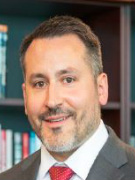
He holds a bachelor’s degree in computer engineering from RoseHulman Institute of Technology, a master’s in electrical engineering from the University of Illinois Urbana-Champaign, and a Ph.D. in computer science from the University of Maryland College Park.
 Dr. Antonio DeSimone is the Chief Scientist for Communications Systems at Johns Hopkins University’s Applied Physics Laboratory. He is the principal technical leader for APL's efforts in National Security Communications. Prior to joining APL, he led product teams in Lucent's Optical Networking Unit and Lucent Digital Video, a pioneer in high-definition television encoding. He started his career at AT&T Bell Laboratories, where he did work in network design, performance analysis, network and computer security, wireless, digital video, and storage networking. Dr. DeSimone holds ten patents in data networking, Web caching and other Internet applications and has authored numerous technical publications. He holds Ph.D. and Sc.M. degrees from Brown University and a B.S. from Rensselaer Polytechnic Institute, all in Physics.
Dr. Antonio DeSimone is the Chief Scientist for Communications Systems at Johns Hopkins University’s Applied Physics Laboratory. He is the principal technical leader for APL's efforts in National Security Communications. Prior to joining APL, he led product teams in Lucent's Optical Networking Unit and Lucent Digital Video, a pioneer in high-definition television encoding. He started his career at AT&T Bell Laboratories, where he did work in network design, performance analysis, network and computer security, wireless, digital video, and storage networking. Dr. DeSimone holds ten patents in data networking, Web caching and other Internet applications and has authored numerous technical publications. He holds Ph.D. and Sc.M. degrees from Brown University and a B.S. from Rensselaer Polytechnic Institute, all in Physics.
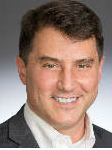 Frank Ferrante is the director of the Military, Aerospace and Government division within Intel Corporation’s Network & Custom Logic Group (NCLG). Frank had been an employee of Altera for 7 years before the company was acquired by Intel in 2015. His degree is in electrical engineering and he spent most of his career working on E/W and Radar systems.
Frank Ferrante is the director of the Military, Aerospace and Government division within Intel Corporation’s Network & Custom Logic Group (NCLG). Frank had been an employee of Altera for 7 years before the company was acquired by Intel in 2015. His degree is in electrical engineering and he spent most of his career working on E/W and Radar systems.
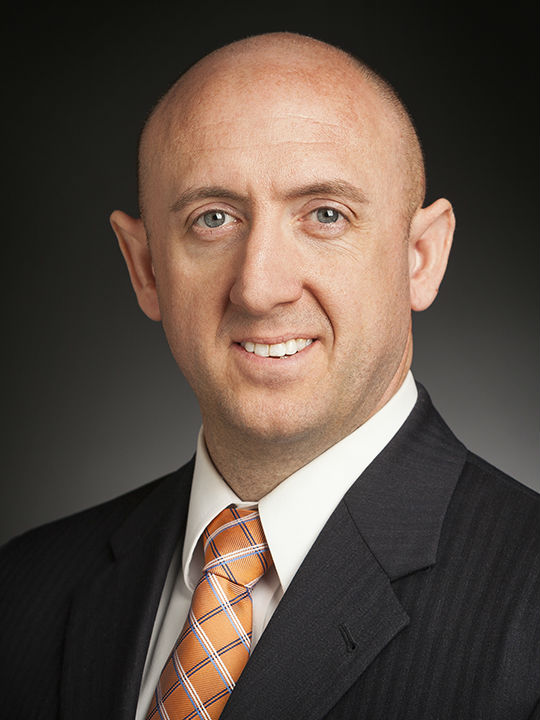 John Forte currently serves as the Mission Area Executive for JHU/APL’s Homeland Protection Mission Area. His programs focus on securing the nation and its interests against asymmetric, terrorist-type attacks of catastrophic consequence through applied technology and systems engineering. Defeating chemical, biological, radiological, nuclear and explosive weapons as well as countering advanced persistent cyber threats is the mission area’s central challenge. John is the Mission Area’s lead in assured communications as well as in understanding and mitigating cyber threats of national importance, to include threats to state and local environments, critical infrastructure and to senior leaders and first responders. He currently serves on the Board of Advisors to Johns Hopkins University’s Information Security Institute (JHUISI) on various aspects of cybersecurity in support of their focus on research and education in information security, assurance and privacy. John also serves on the Strategic Advisory Board of SC Cyber in advising on the development of talent, techniques, and tools to defend critical, connected infrastructure within South Carolina. Further, John also serves as the Co-Director for the JHU Institute for Assured Autonomy. Conducting intelligent and autonomous systems assurance research and establishing partnerships across government, industry and academia for the safety, trust and security of the convergence of IoT, networks and infrastructure, artificial intelligence, machine learning and robotics within real-world environments. John came to the lab after collecting valuable experience serving in senior leadership and technical positions within the US military and in the public and private sectors.
John Forte currently serves as the Mission Area Executive for JHU/APL’s Homeland Protection Mission Area. His programs focus on securing the nation and its interests against asymmetric, terrorist-type attacks of catastrophic consequence through applied technology and systems engineering. Defeating chemical, biological, radiological, nuclear and explosive weapons as well as countering advanced persistent cyber threats is the mission area’s central challenge. John is the Mission Area’s lead in assured communications as well as in understanding and mitigating cyber threats of national importance, to include threats to state and local environments, critical infrastructure and to senior leaders and first responders. He currently serves on the Board of Advisors to Johns Hopkins University’s Information Security Institute (JHUISI) on various aspects of cybersecurity in support of their focus on research and education in information security, assurance and privacy. John also serves on the Strategic Advisory Board of SC Cyber in advising on the development of talent, techniques, and tools to defend critical, connected infrastructure within South Carolina. Further, John also serves as the Co-Director for the JHU Institute for Assured Autonomy. Conducting intelligent and autonomous systems assurance research and establishing partnerships across government, industry and academia for the safety, trust and security of the convergence of IoT, networks and infrastructure, artificial intelligence, machine learning and robotics within real-world environments. John came to the lab after collecting valuable experience serving in senior leadership and technical positions within the US military and in the public and private sectors.
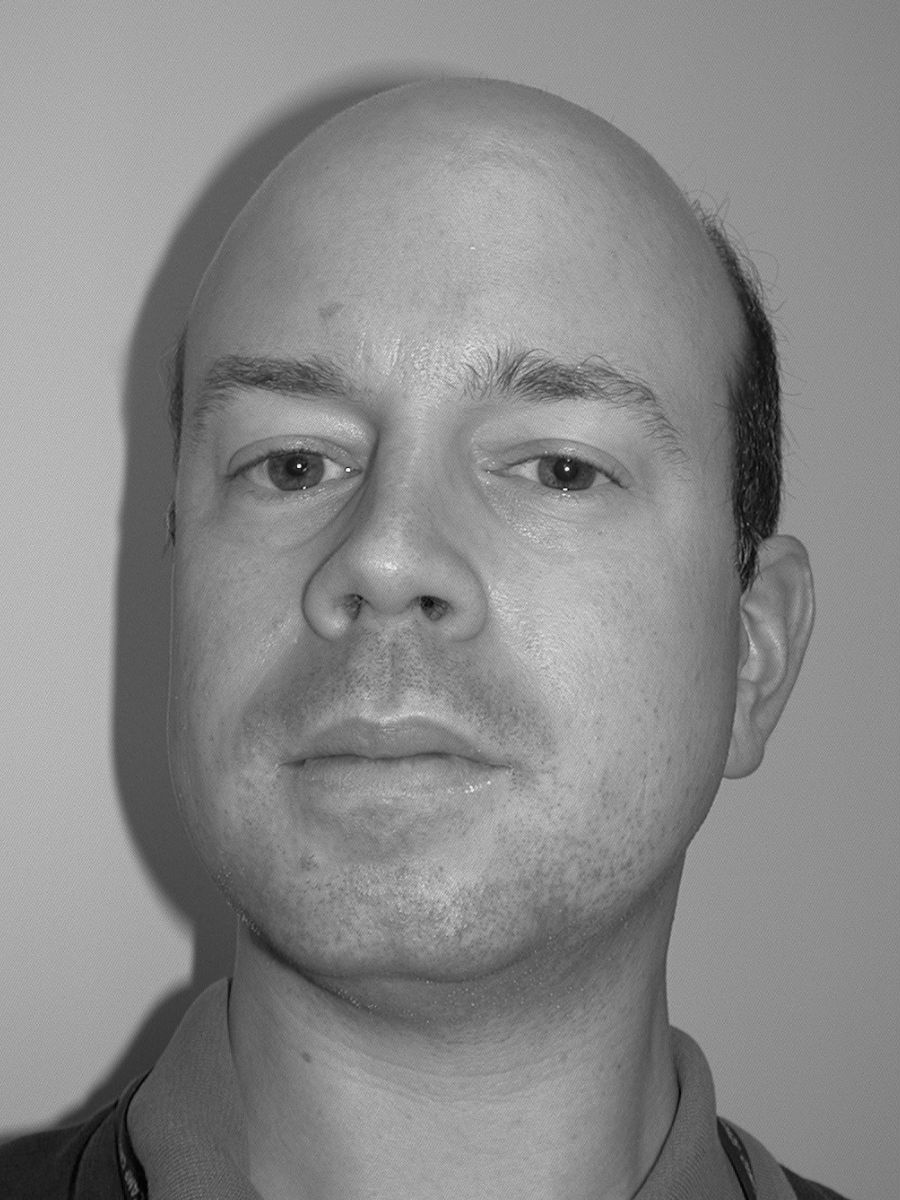 Dr. David Griffith earned a doctorate in electrical engineering from the University of Delaware; his dissertation examined time-frequency representations of signals that are resistant to impulse noise by incorporating nonlinear filtering techniques. He spent several years in industry at various companies working on modeling satellite communications systems. At NIST, he has worked on a variety of topics, including: techniques for improving the resiliency of optical networks, including optical burst-switched networks, communications systems for smart grid, and characterizing signaling overhead in the IEEE 802.21 Media Independent Handover (MIH) protocol. He is currently working on public safety communications, including D2D communications, and on resource allocation in 5G wireless networks.
Dr. David Griffith earned a doctorate in electrical engineering from the University of Delaware; his dissertation examined time-frequency representations of signals that are resistant to impulse noise by incorporating nonlinear filtering techniques. He spent several years in industry at various companies working on modeling satellite communications systems. At NIST, he has worked on a variety of topics, including: techniques for improving the resiliency of optical networks, including optical burst-switched networks, communications systems for smart grid, and characterizing signaling overhead in the IEEE 802.21 Media Independent Handover (MIH) protocol. He is currently working on public safety communications, including D2D communications, and on resource allocation in 5G wireless networks.
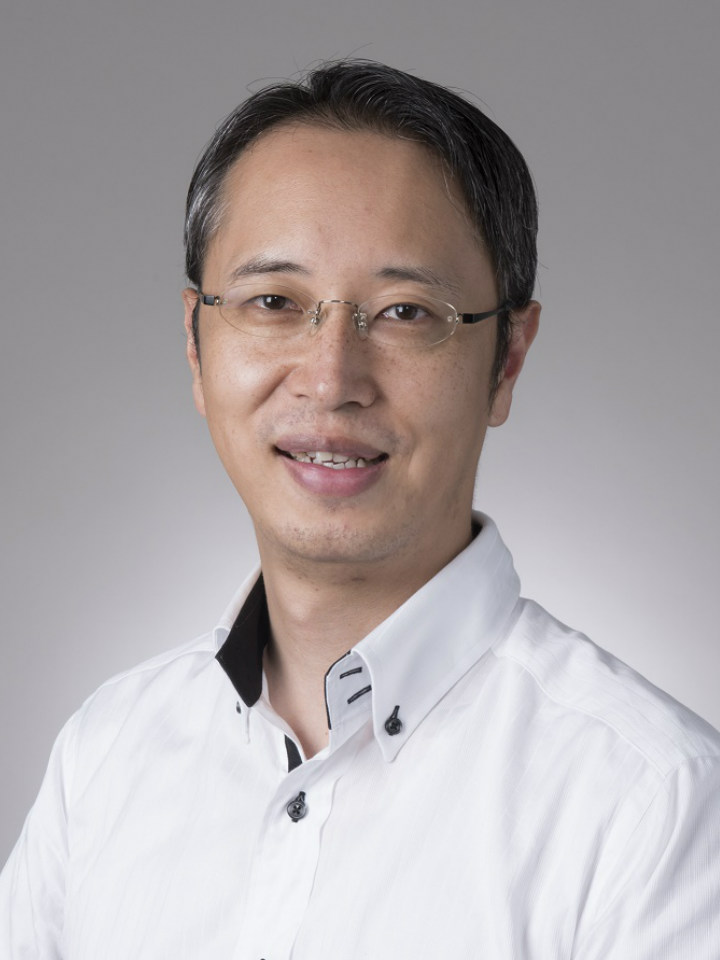 Dr. Hiroaki Kamoda is the Director for Policy planning of Cybersecurity Division, Ministry of Economy, Trade and Industry (METI), Japan. He received his Ph.D. in Engineering from Osaka University. METI formulated the Cyber/Physical Security Framework (CPSF), a well-organized an overview of security measures that industries are required to take. He is currently striving to disseminate the CPSF among major industries and to promote discussions on specific security measures that respective industries need.
Dr. Hiroaki Kamoda is the Director for Policy planning of Cybersecurity Division, Ministry of Economy, Trade and Industry (METI), Japan. He received his Ph.D. in Engineering from Osaka University. METI formulated the Cyber/Physical Security Framework (CPSF), a well-organized an overview of security measures that industries are required to take. He is currently striving to disseminate the CPSF among major industries and to promote discussions on specific security measures that respective industries need.
He was the general manager of cyber security section in NTT DATA Japan and led many cyber security consulting projects and secure system integration projects. He has researched the formal methods as a visiting researcher of Fraunhofer FOKUS Germany and Imperial College London. Also he was the guest professor of Shizuoka University and the cyber security advisor of Aichi Prefectural Police.
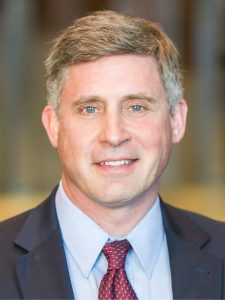 Mr. James Kimery is the director of marketing for RF, communications, and software defined radio (SDR) initiatives at NI. He is responsible for the company’s communication system design and SDR strategies. Kimery also manages NI’s advanced research RF/Communications Lead User program. Prior to joining NI, Kimery was the director of marketing for Silicon Laboratories’ wireless division, which later became a subsidiary of ST-Ericsson. With Kimery as director, the wireless division grew revenues from $5 million to over $250 million. The division also produced several industry innovations including the first integrated CMOS RF synthesizer and transceiver for cellular communications, the first digitally controlled crystal oscillator, and the first integrated single-chip phone (AeroFONE). The IEEE voted AeroFONE one of the top 40 innovative ICs ever developed. Kimery also worked at NI before transitioning to Silicon Labs and led many successful programs, including the concept and launch of the PXI platform. Kimery was a founding member of the VXIplug&play Systems Alliance, the Virtual Instrument Software Architecture (VISA) working group, and the PXI Systems Alliance. He has authored nearly 30 technical papers and articles covering a variety of wireless and test and measurement topics Kimery earned a master’s degree in business administration from The University of Texas at Austin and a bachelor’s degree in electrical engineering from Texas A&M University.
Mr. James Kimery is the director of marketing for RF, communications, and software defined radio (SDR) initiatives at NI. He is responsible for the company’s communication system design and SDR strategies. Kimery also manages NI’s advanced research RF/Communications Lead User program. Prior to joining NI, Kimery was the director of marketing for Silicon Laboratories’ wireless division, which later became a subsidiary of ST-Ericsson. With Kimery as director, the wireless division grew revenues from $5 million to over $250 million. The division also produced several industry innovations including the first integrated CMOS RF synthesizer and transceiver for cellular communications, the first digitally controlled crystal oscillator, and the first integrated single-chip phone (AeroFONE). The IEEE voted AeroFONE one of the top 40 innovative ICs ever developed. Kimery also worked at NI before transitioning to Silicon Labs and led many successful programs, including the concept and launch of the PXI platform. Kimery was a founding member of the VXIplug&play Systems Alliance, the Virtual Instrument Software Architecture (VISA) working group, and the PXI Systems Alliance. He has authored nearly 30 technical papers and articles covering a variety of wireless and test and measurement topics Kimery earned a master’s degree in business administration from The University of Texas at Austin and a bachelor’s degree in electrical engineering from Texas A&M University.
 Julius Knapp has been with the FCC for 44 years and has served as the Chief of the FCC’s Office of Engineering and Technology (OET) since 2006. OET is the Commission’s primary resource for engineering expertise and provides technical support to the Chairman, Commissioners and FCC Bureaus and Offices. He received the FCC’s Silver and Gold Medal Awards for distinguished service at the Commission as well as the Presidential Distinguished Rank Award for exceptional achievement in the career Senior Executive Service. Mr. Knapp has been the recipient of the Eugene C. Bowler award for exceptional professionalism and dedication to public service; the Federal Communications Bar Association Excellence in Government Service Award; the WCAI Government Leadership award; the National Spectrum Management Association Fellow Award; the Association of Federal Communications Consulting Engineers E. Noel Luddy Award; the Satellite Industry Association Satellite Leadership in Government Award; and, the Dynamic Spe3ctrum Alliance Lifetime Achievement Award. Mr. Knapp is a Life Member of the IEEE. He received a bachelor’s degree in electrical engineering from the City College of New York in 1974.
Julius Knapp has been with the FCC for 44 years and has served as the Chief of the FCC’s Office of Engineering and Technology (OET) since 2006. OET is the Commission’s primary resource for engineering expertise and provides technical support to the Chairman, Commissioners and FCC Bureaus and Offices. He received the FCC’s Silver and Gold Medal Awards for distinguished service at the Commission as well as the Presidential Distinguished Rank Award for exceptional achievement in the career Senior Executive Service. Mr. Knapp has been the recipient of the Eugene C. Bowler award for exceptional professionalism and dedication to public service; the Federal Communications Bar Association Excellence in Government Service Award; the WCAI Government Leadership award; the National Spectrum Management Association Fellow Award; the Association of Federal Communications Consulting Engineers E. Noel Luddy Award; the Satellite Industry Association Satellite Leadership in Government Award; and, the Dynamic Spe3ctrum Alliance Lifetime Achievement Award. Mr. Knapp is a Life Member of the IEEE. He received a bachelor’s degree in electrical engineering from the City College of New York in 1974.
 Raymond Knopp is professor in the Communication Systems Department at EURECOM. He is also currently a part-time visiting professor at the Beijing University of Posts and Telecommunications under the Discipline Innovative Engineering Plan. He received the B.Eng. (Honours) and the M.Eng. degrees in Electrical Engineering from McGill University, Montreal, Canada, in 1992 and 1993, respectively. From 1993-1997 he was a research assistant in the Mobile Communications Department at EURECOM working towards the PhD degree in Communication Systems from the Swiss Federal Institute of Technology (EPFL), Lausanne. From 1997-2000 he was a research associate in the Mobile Communications Laboratory (LCM) of the Communication Systems Department of EPFL. His current research and teaching interests are in the area of digital communications, software radio architectures, and implementation aspects of signal processing systems and real-time wireless networking protocols. He has a proven track record in managing both fundamental and experimental research projects at an international level and is currently president of the OpenAirInterface.org academia-industry radio platform initiative which aims to bridge the gap between cutting-edge theoretical advances in wireless communications and practical designs through a 3GPP-compatible open-source code collaboration model.
Raymond Knopp is professor in the Communication Systems Department at EURECOM. He is also currently a part-time visiting professor at the Beijing University of Posts and Telecommunications under the Discipline Innovative Engineering Plan. He received the B.Eng. (Honours) and the M.Eng. degrees in Electrical Engineering from McGill University, Montreal, Canada, in 1992 and 1993, respectively. From 1993-1997 he was a research assistant in the Mobile Communications Department at EURECOM working towards the PhD degree in Communication Systems from the Swiss Federal Institute of Technology (EPFL), Lausanne. From 1997-2000 he was a research associate in the Mobile Communications Laboratory (LCM) of the Communication Systems Department of EPFL. His current research and teaching interests are in the area of digital communications, software radio architectures, and implementation aspects of signal processing systems and real-time wireless networking protocols. He has a proven track record in managing both fundamental and experimental research projects at an international level and is currently president of the OpenAirInterface.org academia-industry radio platform initiative which aims to bridge the gap between cutting-edge theoretical advances in wireless communications and practical designs through a 3GPP-compatible open-source code collaboration model.
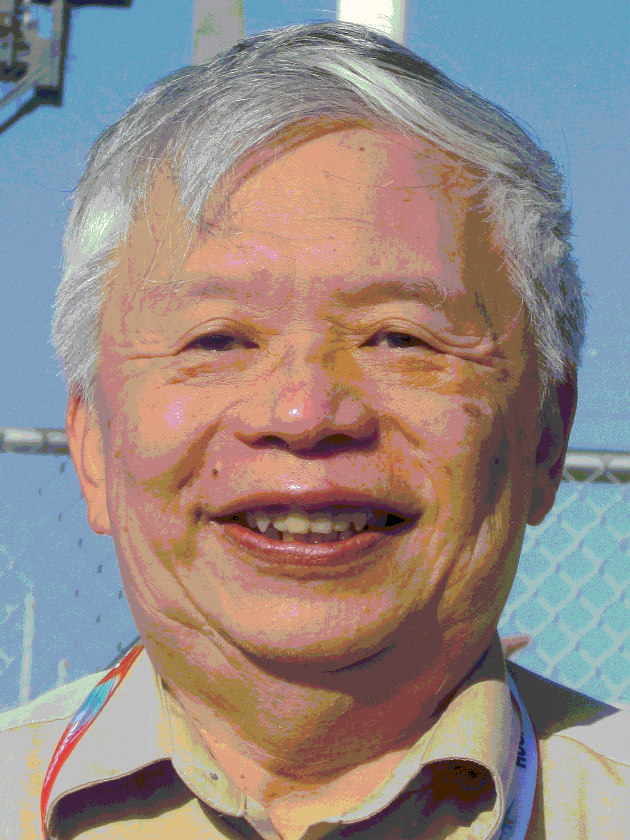 Dr. Lin-Nan Lee received his B.S. degree from National Taiwan University, his M.S. and Ph.D. from the University of Norte Dame. He is Vice President of Advance Development at Hughes (an Echostar company). His research activity spans many fundamental communications disciplines such as channel coding, modulation, multiple access, signal processing and data compression. He is currently involved in 3GPP standardization process for the 5th Generation (5G) Wireless Standard. His main focuses have been to incorporate satellite communications as part of the 5th Generation wireless network of networks and a grant-free Non-Orthogonal Multiples Access (NOMA) technique optimized for massive Machine Type Communications (mMTC). Prior to Hughes, he worked for Communications Satellite Corporation (COMSAT), serving in various research and development positions in the COMSAT Laboratory, and as Chief Scientist of COMSAT System Division. Prior to COMSAT, he was with Linkabit Corporation developing an experimental packet satellite network linking the ARPANET and networks in UK and Norway over an Intelsat satellite.
Dr. Lin-Nan Lee received his B.S. degree from National Taiwan University, his M.S. and Ph.D. from the University of Norte Dame. He is Vice President of Advance Development at Hughes (an Echostar company). His research activity spans many fundamental communications disciplines such as channel coding, modulation, multiple access, signal processing and data compression. He is currently involved in 3GPP standardization process for the 5th Generation (5G) Wireless Standard. His main focuses have been to incorporate satellite communications as part of the 5th Generation wireless network of networks and a grant-free Non-Orthogonal Multiples Access (NOMA) technique optimized for massive Machine Type Communications (mMTC). Prior to Hughes, he worked for Communications Satellite Corporation (COMSAT), serving in various research and development positions in the COMSAT Laboratory, and as Chief Scientist of COMSAT System Division. Prior to COMSAT, he was with Linkabit Corporation developing an experimental packet satellite network linking the ARPANET and networks in UK and Norway over an Intelsat satellite.
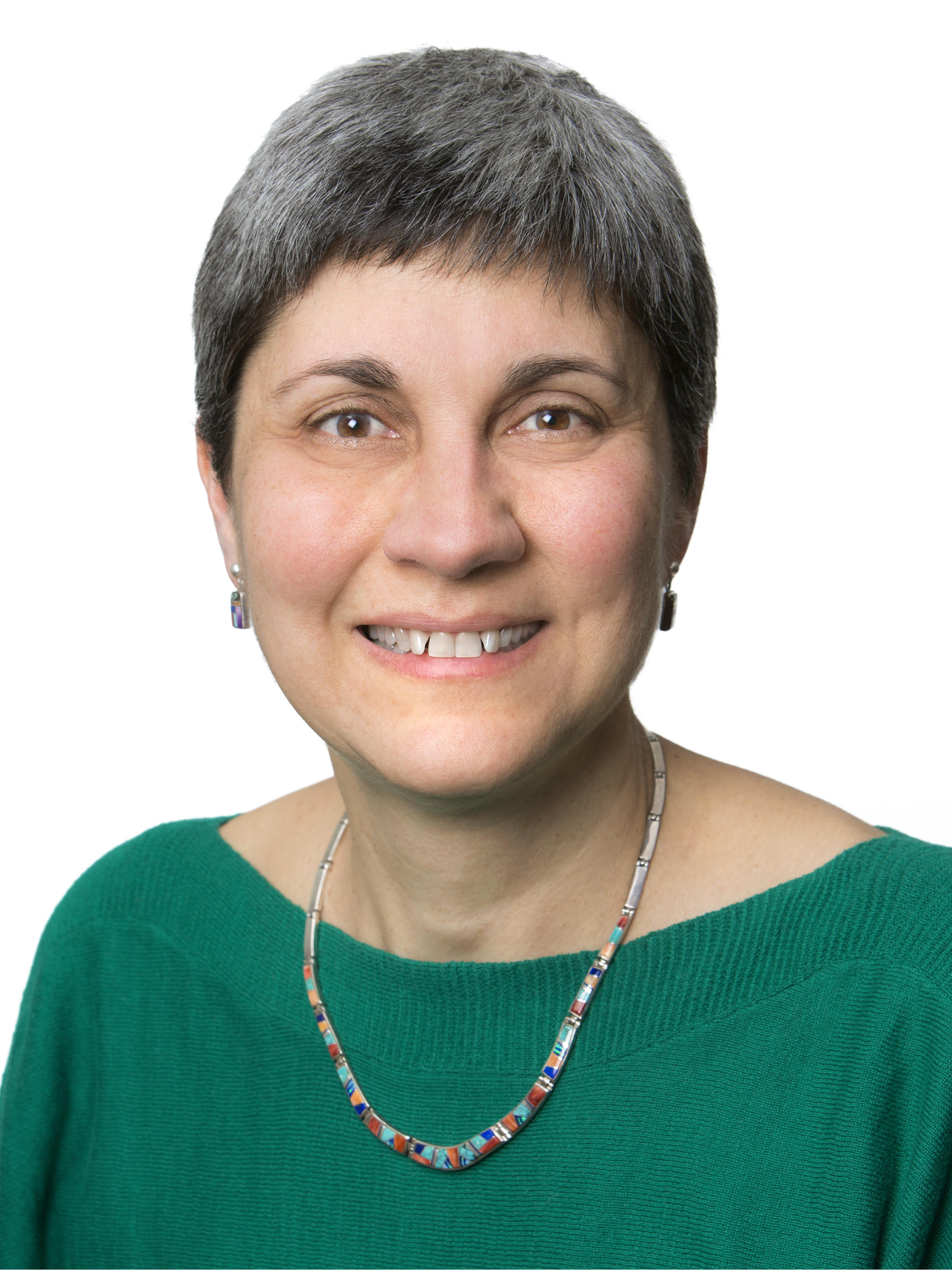 Dr. Kathleen (Kathy) Meier-Hellstern is a versatile technology, telecommunications, and data science executive. She uses a unique combination of optimization, artificial intelligence, in-depth technology and business expertise to create best-in-class analytics tools and software for emerging services. Kathy currently serves as Assistant Vice President of Optimization, Reliability & Customer Analytics (ORCA) for AT&T’s Advanced Technology & Services Organization, charged with delivering enhanced analytic tools and software for AT&T’s 5G and Next Generation networks. In recognition of her outstanding leadership and execution, she was named an AT&T Fellow in 2017 for significant contributions to performance and reliability of the company’s networks and services. Previously, Kathy was Executive Director in AT&T Government Solutions where she led a team of 100+ employees across architecture, planning, operations, security, R&D, and technology evolution for a private network. Kathy earned a Ph.D. and Master’s degree in Operations Research from University of Delaware and a Bachelor’s degree in Mathematics from Millersville State College. She was a visiting scholar at WINLAB, Rutgers University; University of Stuttgart in West Germany; and Technion Israel Institute of Technology in Haifa, Israel. Recognized as a true thought leader and industry expert, Kathy is the author of four book chapters, 24 issued or in-progress patents, and 30 publications. She is an active member of the Institute of Electrical & Electronics Engineering (IEEE) and a mentor to women and minorities through various programs.
Dr. Kathleen (Kathy) Meier-Hellstern is a versatile technology, telecommunications, and data science executive. She uses a unique combination of optimization, artificial intelligence, in-depth technology and business expertise to create best-in-class analytics tools and software for emerging services. Kathy currently serves as Assistant Vice President of Optimization, Reliability & Customer Analytics (ORCA) for AT&T’s Advanced Technology & Services Organization, charged with delivering enhanced analytic tools and software for AT&T’s 5G and Next Generation networks. In recognition of her outstanding leadership and execution, she was named an AT&T Fellow in 2017 for significant contributions to performance and reliability of the company’s networks and services. Previously, Kathy was Executive Director in AT&T Government Solutions where she led a team of 100+ employees across architecture, planning, operations, security, R&D, and technology evolution for a private network. Kathy earned a Ph.D. and Master’s degree in Operations Research from University of Delaware and a Bachelor’s degree in Mathematics from Millersville State College. She was a visiting scholar at WINLAB, Rutgers University; University of Stuttgart in West Germany; and Technion Israel Institute of Technology in Haifa, Israel. Recognized as a true thought leader and industry expert, Kathy is the author of four book chapters, 24 issued or in-progress patents, and 30 publications. She is an active member of the Institute of Electrical & Electronics Engineering (IEEE) and a mentor to women and minorities through various programs.
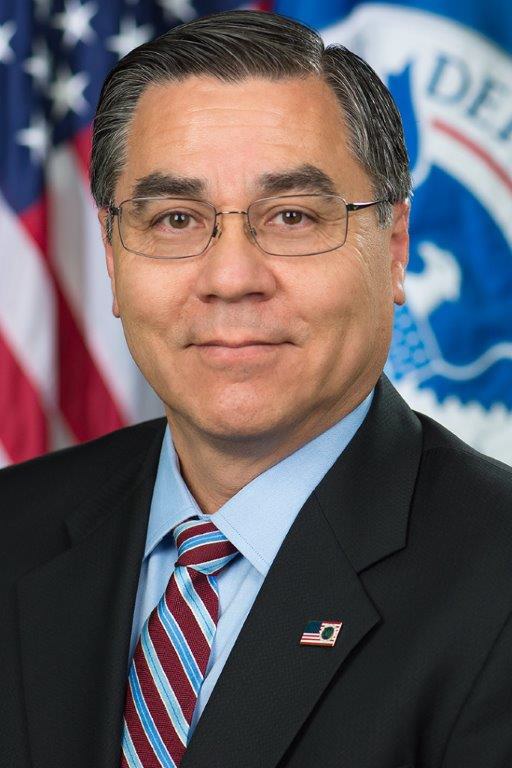 Commander John K. Merrill, USCG (Retired), takes a vision and makes it reality through his dedication to innovation and excellence. With over 30 years of federal and military service, Merrill leverages his experience in communications interoperability, electrical engineering and secured information systems to lead programs that develop and integrate emerging technologies to help the Nation’s first responders do their jobs safer and more effectively.
Commander John K. Merrill, USCG (Retired), takes a vision and makes it reality through his dedication to innovation and excellence. With over 30 years of federal and military service, Merrill leverages his experience in communications interoperability, electrical engineering and secured information systems to lead programs that develop and integrate emerging technologies to help the Nation’s first responders do their jobs safer and more effectively.
John Merrill currently serves as the Executive Director of the Department of Homeland Security (DHS) First Responders and Detection (FRD) division as well as the Next Generation First Responder (NGFR) Apex Program Director. Leading FRD, Merrill oversees four key operating components: Countering Weapons of Mass Destruction Office (CWMD), Federal Emergency Management Agency (FEMA), Federal Law Enforcement Training Center (FLETC) and First Responders.
Under his leadership, NGFR is developing and integrating cutting-edge technologies to make responders better protected, connected and fully aware – allowing for a more effective and efficient response to disasters of all sizes. Merrill has successfully established a model for the NGFR program that expands industry involvement and collaboration with the Nation’s first responders. Knowing the important roles responders play in the safety and protection of American lives, he constantly considers how these emerging technologies will expand responder capabilities. One of his primary missions is to advocate on behalf of first responders, encouraging industry partners within the program to collaborate directly with responders on research, development, testing and evaluation and “walk a mile in their shoes.”
Prior to joining NGFR in 2014, Merrill was formerly the senior policy and technical advisor for DHS on GPS interference, detection, mitigation and radio frequency spectrum management. He is a 28-year veteran of the U.S. Coast Guard, and has worked in program and policy management; radio navigation; maritime law enforcement; search and rescue; vessel traffic services; and telecommunications.
Merrill, a native of Maine, holds Masters of Science degrees in both Management of Secure Information Systems and Systems Engineering from George Mason University as well as Bachelor of Science degrees in both Electrical Engineering and Electronics Engineering from Capitol Technology University.
 Prof. H. Vincent Poor is the Michael Henry Strater University Professor at Princeton University. He received his Ph.D. in EECS from Princeton in 1977, and has also received honorary doctorates for a number of universities in Asia, Europe and North America. From 1977 until joining the Princeton faculty in 1990, he was on the faculty at the University of Illinois at Urbana-Champaign. He has also held visiting positions at several other universities, including most recently at Berkeley and Cambridge. Dr. Poor’s research interests are in information theory and signal processing, and their applications in wireless networks, energy systems and related fields. He is a member of the National Academy of Engineering and the National Academy of Sciences, and is a foreign member of the Royal Society and other national and international academies. He received IEEE Alexander Graham Bell Medal in 2017.
Prof. H. Vincent Poor is the Michael Henry Strater University Professor at Princeton University. He received his Ph.D. in EECS from Princeton in 1977, and has also received honorary doctorates for a number of universities in Asia, Europe and North America. From 1977 until joining the Princeton faculty in 1990, he was on the faculty at the University of Illinois at Urbana-Champaign. He has also held visiting positions at several other universities, including most recently at Berkeley and Cambridge. Dr. Poor’s research interests are in information theory and signal processing, and their applications in wireless networks, energy systems and related fields. He is a member of the National Academy of Engineering and the National Academy of Sciences, and is a foreign member of the Royal Society and other national and international academies. He received IEEE Alexander Graham Bell Medal in 2017.
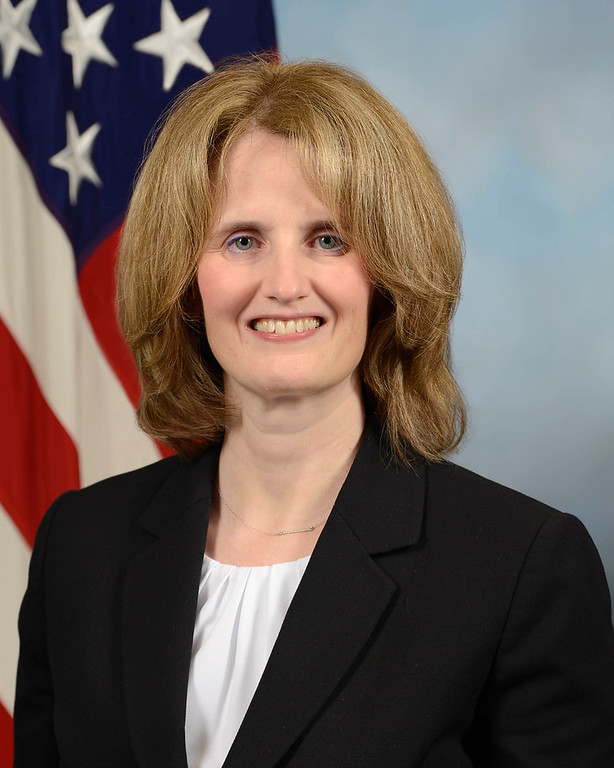 Dr. Lisa Porter is the Deputy Under Secretary of Defense for Research and Engineering (DUSD(R&E)), and with the USD(R&E), is responsible for the research, development, and prototyping activities across the DoD enterprise. In addition, the USD and DUSD oversee the activities of the Defense Advanced Research Projects Agency (DARPA), the Missile Defense Agency (MDA), the Strategic Capabilities Office (SCO), Defense Innovation Unit (DIU), the DoD Laboratory and Engineering Center enterprise, and the Under Secretariat staff focused on developing advanced technology and capability for the U.S. military.
Dr. Lisa Porter is the Deputy Under Secretary of Defense for Research and Engineering (DUSD(R&E)), and with the USD(R&E), is responsible for the research, development, and prototyping activities across the DoD enterprise. In addition, the USD and DUSD oversee the activities of the Defense Advanced Research Projects Agency (DARPA), the Missile Defense Agency (MDA), the Strategic Capabilities Office (SCO), Defense Innovation Unit (DIU), the DoD Laboratory and Engineering Center enterprise, and the Under Secretariat staff focused on developing advanced technology and capability for the U.S. military.
Dr. Porter previously served as Executive Vice President of In-Q-Tel (IQT) and Director of IQT Labs. Prior to joining IQT, Dr. Porter was the President of Teledyne Scientific & Imaging She was the first Director of the Intelligence Advanced Research Projects Activity (IARPA) in the Office of the Director of National Intelligence (ODNI), and also previously served as the Associate Administrator for the Aeronautics Research Mission Directorate at the National Aeronautics and Space Administration (NASA). Dr. Porter also served as a program manager and senior scientist at the Defense Advanced Research Projects Agency (DARPA).
Dr. Porter holds a bachelor's degree in nuclear engineering from the Massachusetts Institute of Technology and a doctorate in applied physics from Stanford University. She received the Office of the Secretary of Defense Medal for Exceptional Public Service in 2005, the NASA Outstanding Leadership Medal in 2008, the National Intelligence Distinguished Service Medal in 2012, and the Presidential Meritorious Rank Award in 2013.
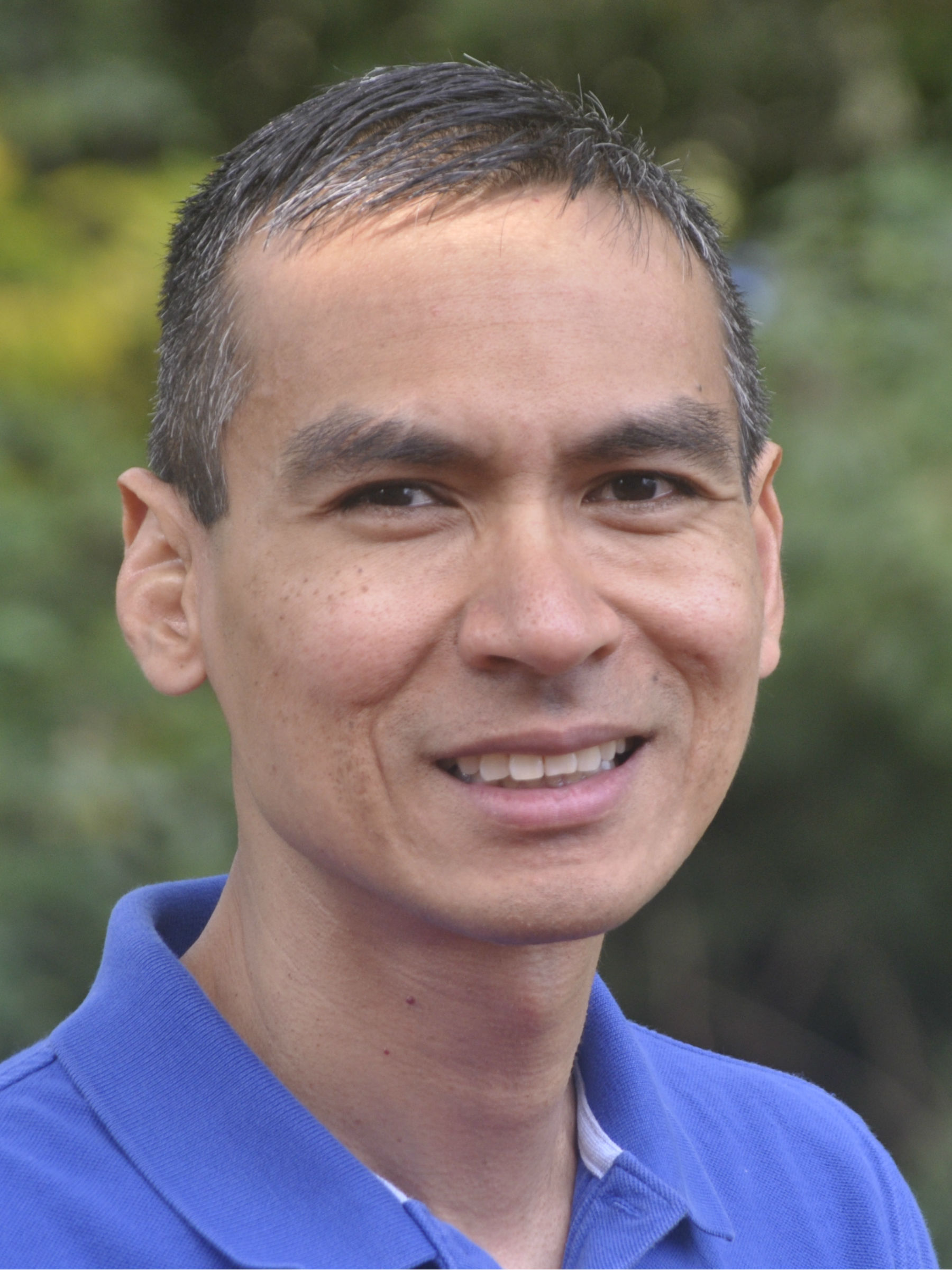 Dr. Rapeepat Ratasuk (This email address is being protected from spambots. You need JavaScript enabled to view it.) received a doctorate in electrical engineering from Northwestern University, Evanston, Illinois, in 2000. He is currently a Principal Research Specialist with Nokia Bell Labs, Naperville, Illinois. He has extensive experience in cellular system design and analysis, including algorithm development, performance analysis and validation, physical-layer modeling, and simulations. He has more than 70 issued patents and published more than 70 journal and conference papers. He is a co-author of the book titled "Essentials of LTE and LTE-A". His current research areas are in the areas of 5G wireless networks, mmWave, and machine-type communications.
Dr. Rapeepat Ratasuk (This email address is being protected from spambots. You need JavaScript enabled to view it.) received a doctorate in electrical engineering from Northwestern University, Evanston, Illinois, in 2000. He is currently a Principal Research Specialist with Nokia Bell Labs, Naperville, Illinois. He has extensive experience in cellular system design and analysis, including algorithm development, performance analysis and validation, physical-layer modeling, and simulations. He has more than 70 issued patents and published more than 70 journal and conference papers. He is a co-author of the book titled "Essentials of LTE and LTE-A". His current research areas are in the areas of 5G wireless networks, mmWave, and machine-type communications.
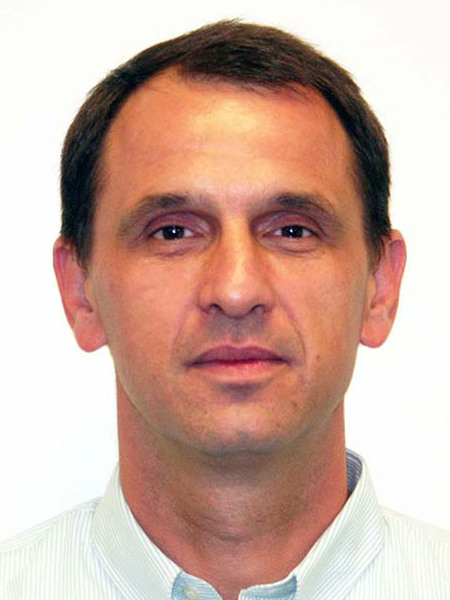 Dr. Ivan Seskar is an Associate Director at WINLAB, Rutgers University responsible for experimental systems and prototyping projects. He is currently the program director for the COSMOS project responsible for the New York City NSF PAWR deployment, the PI for the NSF GENI Wireless project, which resulted in campus deployments of LTE/WiMAX base stations at several US universities, and the PI for the NSF CloudLab deployment at Rutgers. He has also been the co-PI and project manager for all three phases of the NSF-supported ORBIT mid-scale testbed project at WINLAB, successfully leading technology development and operations since the testbed was released as a community resource in 2005 and for which the team received the 2008 NSF Alexander Schwarzkopf Prize for Technological Innovation. Ivan is a co-chair of the IEEE 5G Testbed Working Group, a Senior Member of the IEEE, a member of ACM and the co-founder and CTO of Upside Wireless Inc.
Dr. Ivan Seskar is an Associate Director at WINLAB, Rutgers University responsible for experimental systems and prototyping projects. He is currently the program director for the COSMOS project responsible for the New York City NSF PAWR deployment, the PI for the NSF GENI Wireless project, which resulted in campus deployments of LTE/WiMAX base stations at several US universities, and the PI for the NSF CloudLab deployment at Rutgers. He has also been the co-PI and project manager for all three phases of the NSF-supported ORBIT mid-scale testbed project at WINLAB, successfully leading technology development and operations since the testbed was released as a community resource in 2005 and for which the team received the 2008 NSF Alexander Schwarzkopf Prize for Technological Innovation. Ivan is a co-chair of the IEEE 5G Testbed Working Group, a Senior Member of the IEEE, a member of ACM and the co-founder and CTO of Upside Wireless Inc.
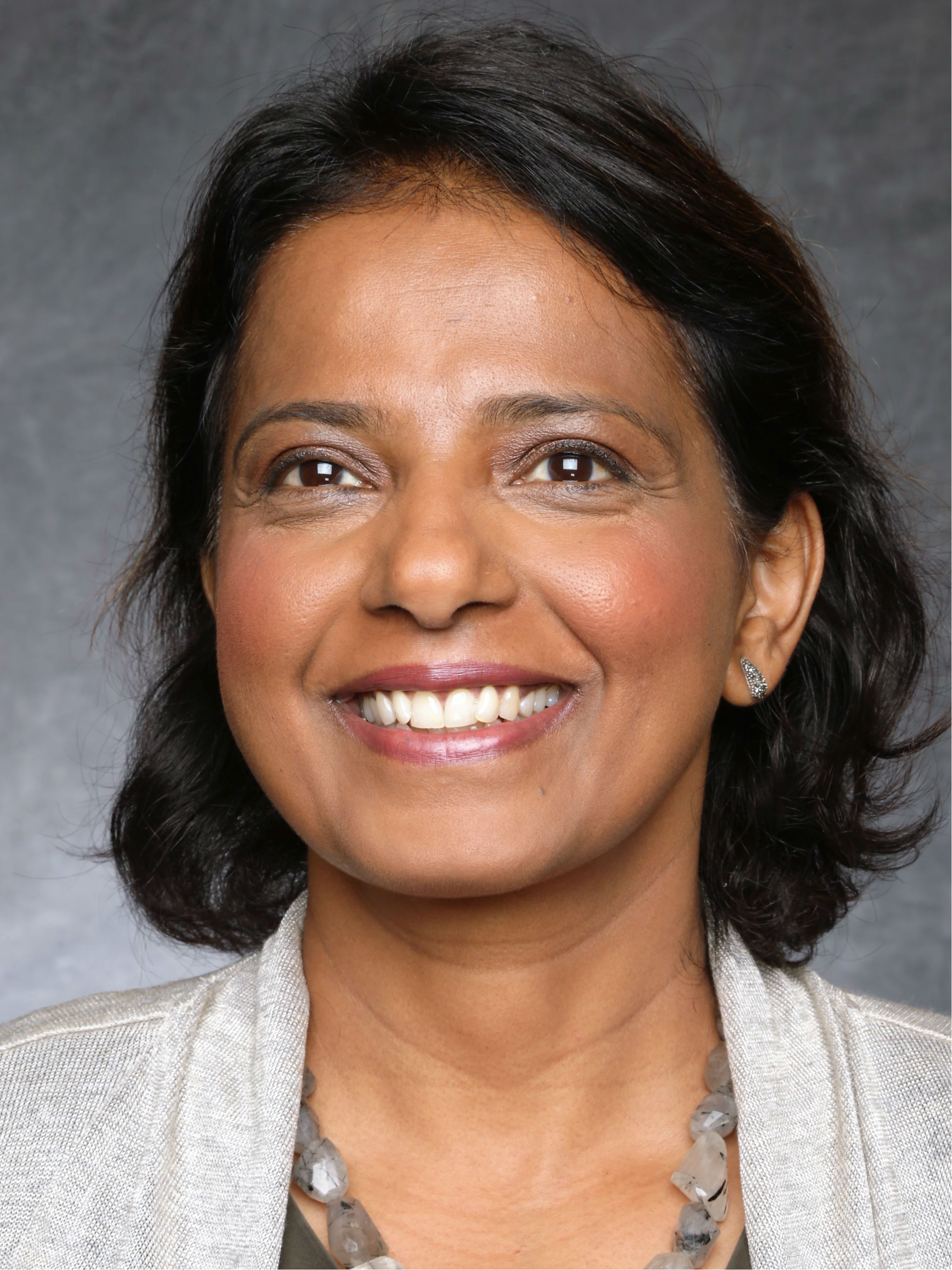 Dr. Sanyogita Shamsunder is the Vice President of 5G Labs and Innovation at Verizon. Previously, she was Director of Advanced Wireless and Mobile Technology Planning, and has led the 5G network planning and Device Technologies teams at Verizon. Sanyogita has directed and managed teams in all areas of the wireless business, including silicon, and network technology development, marketing, planning and strategy. Sanyogita received an MBA from The Wharton School, and a PhD in Electrical Engineering and Math from The University of Virginia.
Dr. Sanyogita Shamsunder is the Vice President of 5G Labs and Innovation at Verizon. Previously, she was Director of Advanced Wireless and Mobile Technology Planning, and has led the 5G network planning and Device Technologies teams at Verizon. Sanyogita has directed and managed teams in all areas of the wireless business, including silicon, and network technology development, marketing, planning and strategy. Sanyogita received an MBA from The Wharton School, and a PhD in Electrical Engineering and Math from The University of Virginia.
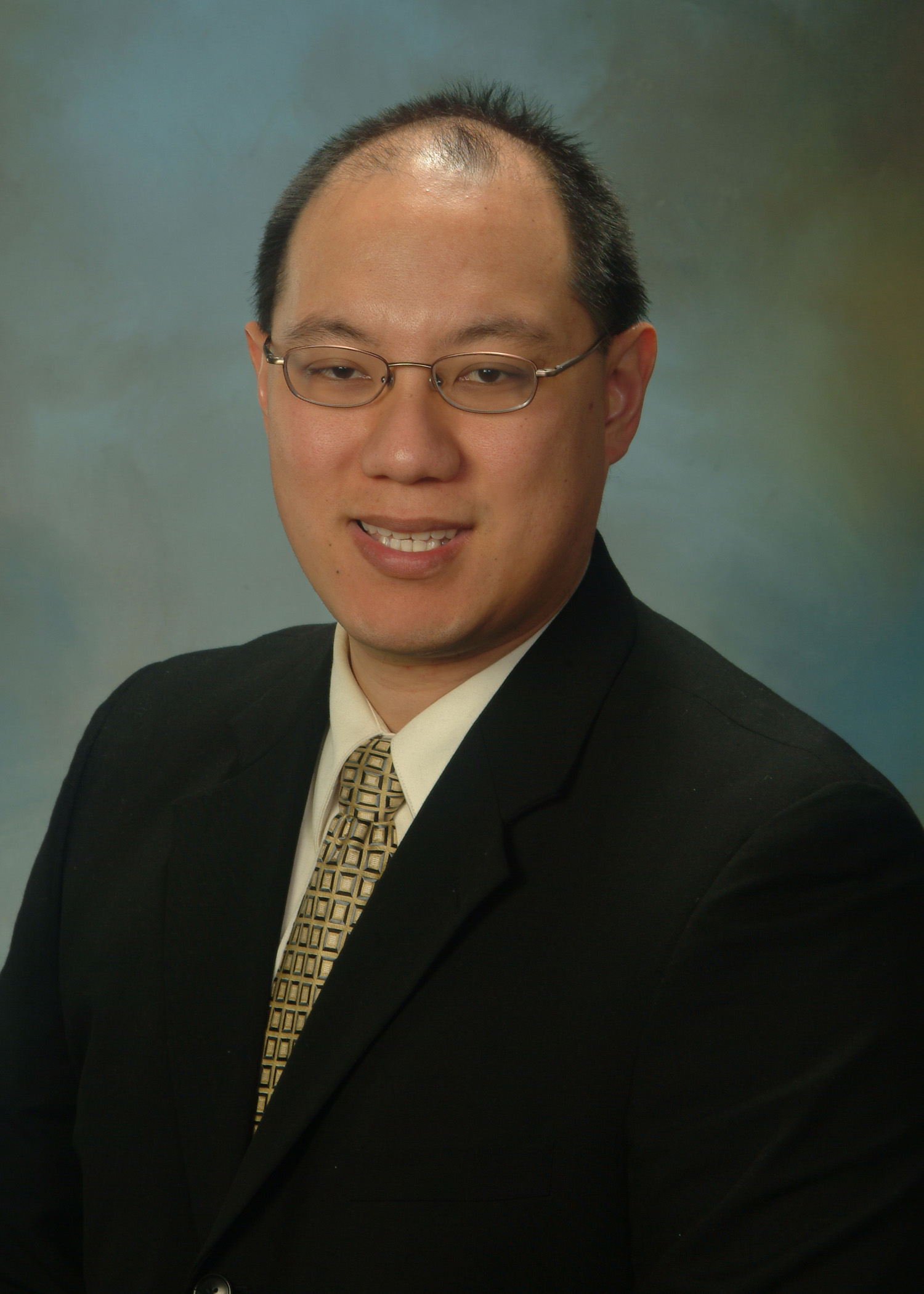 Raymond Shen, PhD directs Spectrum Monitoring and Field Test Solutions at Keysight Technologies. In this role he leads Keysight's spectrum monitoring group, managing a vast portfolio of solutions that include handheld, outdoor, and modular platforms. He has over 20 years of experience in spectrum monitoring and signal demodulation, with expertise in cellular signals. Shen has a BS EE from Caltech and a MS EE and PhD EE from Stanford University, where his PhD was in the area ofneural networks.
Raymond Shen, PhD directs Spectrum Monitoring and Field Test Solutions at Keysight Technologies. In this role he leads Keysight's spectrum monitoring group, managing a vast portfolio of solutions that include handheld, outdoor, and modular platforms. He has over 20 years of experience in spectrum monitoring and signal demodulation, with expertise in cellular signals. Shen has a BS EE from Caltech and a MS EE and PhD EE from Stanford University, where his PhD was in the area ofneural networks.
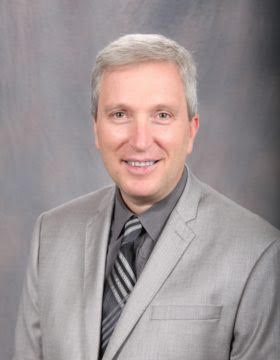 Dr. Alex Sprintson serves as a Program Director in the NSF’s Directorate of Computer & Information Science and Engineering (CISE) since September 2018. He manages networking research within the Networking Technologies and Systems (NeTS) and Secure and Trustworthy Cyberspace (SaTC) programs. Alex Sprintson is a faculty member in the Department of Electrical and Computer Engineering, Texas A&M University, College Station, where he conducts research on wireless network coding, distributed storage, private information retrieval, and software-defined networks. Dr. Sprintson received the Wolf Award for Distinguished Ph.D.students, the Viterbi Postdoctoral Fellowship, the TAMU College of Engineering Outstanding Contribution Award, and the NSF CAREER award. From 2013 and 2019 he served as an Associate Editor of the IEEE Transactions on Wireless Communications. He has been a member of the Technical Program Committee for the IEEE Infocom 2006--2020.
Dr. Alex Sprintson serves as a Program Director in the NSF’s Directorate of Computer & Information Science and Engineering (CISE) since September 2018. He manages networking research within the Networking Technologies and Systems (NeTS) and Secure and Trustworthy Cyberspace (SaTC) programs. Alex Sprintson is a faculty member in the Department of Electrical and Computer Engineering, Texas A&M University, College Station, where he conducts research on wireless network coding, distributed storage, private information retrieval, and software-defined networks. Dr. Sprintson received the Wolf Award for Distinguished Ph.D.students, the Viterbi Postdoctoral Fellowship, the TAMU College of Engineering Outstanding Contribution Award, and the NSF CAREER award. From 2013 and 2019 he served as an Associate Editor of the IEEE Transactions on Wireless Communications. He has been a member of the Technical Program Committee for the IEEE Infocom 2006--2020.
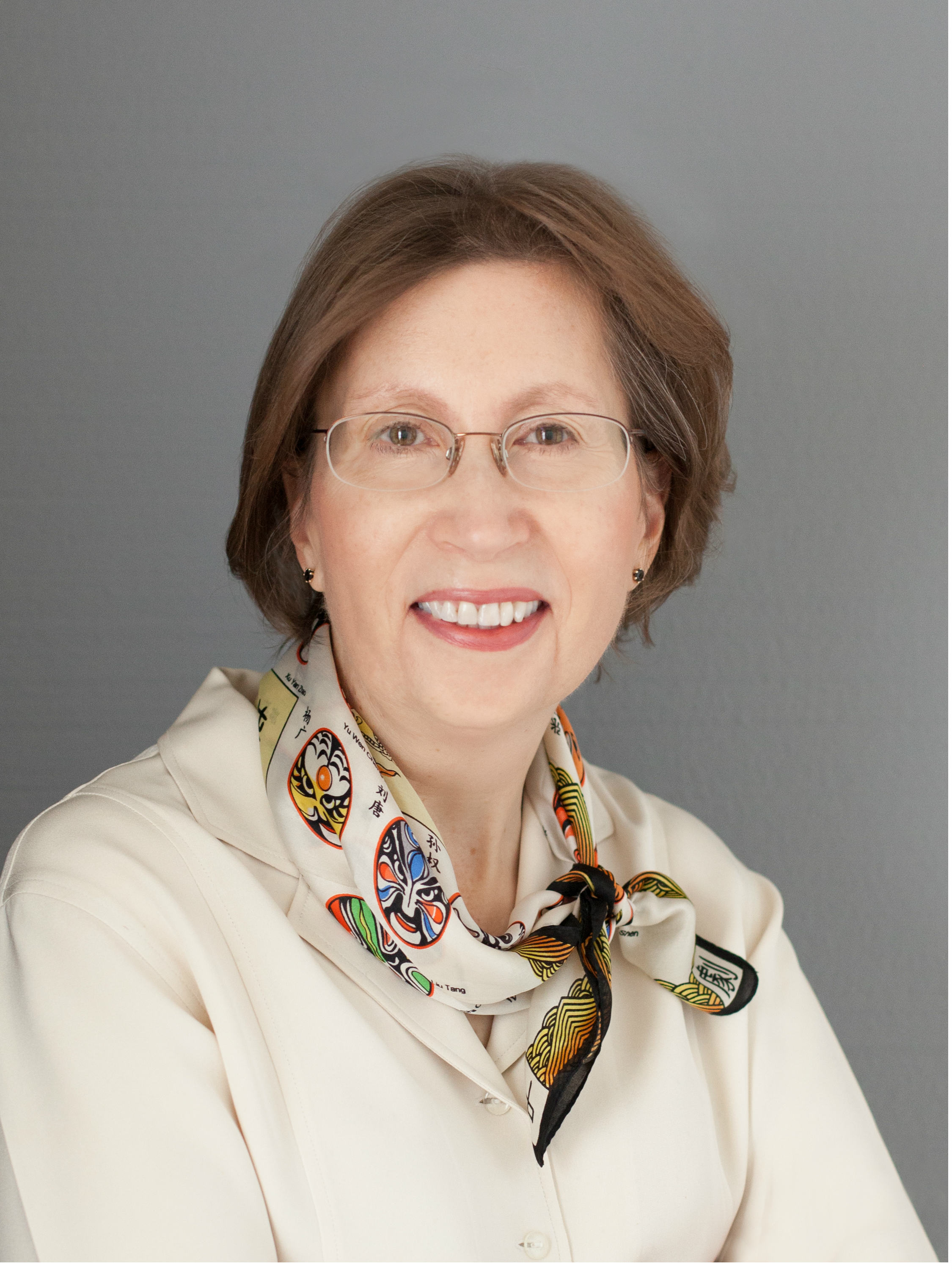 Ms. Dorothy Stanley is an HPE Fellow and head of standards strategy at Aruba, a Hewlett Packard Enterprise company. She currently serves as Chair of the IEEE 802.11 Working Group. She is also Chair of the IEEE 802.11REVmd Task Group (responsible for maintenance and revision of the 802.11 standard), and has chaired the IEEE 802.11REVmc, 802.11REVmb and IEEE 802.11v Wireless Network Management task groups. She has served in numerous leadership roles in Wi-Fi Alliance, and is co-chair of the IETF-IEEE 802 coordination committee.
Ms. Dorothy Stanley is an HPE Fellow and head of standards strategy at Aruba, a Hewlett Packard Enterprise company. She currently serves as Chair of the IEEE 802.11 Working Group. She is also Chair of the IEEE 802.11REVmd Task Group (responsible for maintenance and revision of the 802.11 standard), and has chaired the IEEE 802.11REVmc, 802.11REVmb and IEEE 802.11v Wireless Network Management task groups. She has served in numerous leadership roles in Wi-Fi Alliance, and is co-chair of the IETF-IEEE 802 coordination committee.
Previous to joining Aruba Networks in 2005, Stanley was a Consulting Member of the Technical Staff at Agere Systems for Wavelan products and a Distinguished Member of the Technical Staff at Lucent Technologies and AT&T Bell Laboratories. Her responsibilities included system architecture, software development, and capacity and performance analysis for Digital Switching Systems and fixed wireless systems. Among Stanley’s awards are 5 patents, a WFA Members Achievement Award, WFA Special Recognition Awards for contributions and service to WFA, and IEEE Standards Association awards for contributions to numerous IEEE 802.11 standards.
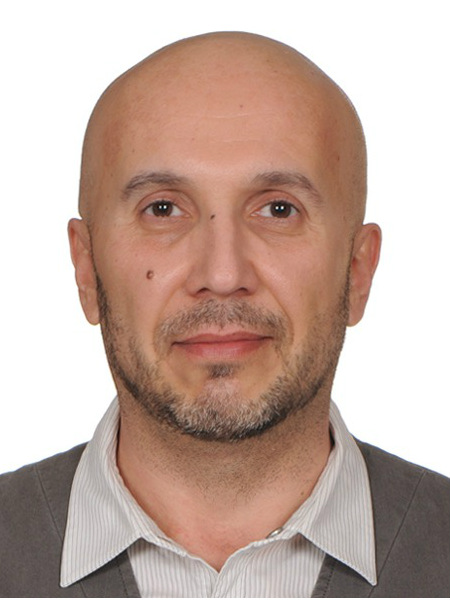 Dr. Oguz Sunay is currently the Chief Architect at Open Networking Foundation where he leads the efforts on 5G mobile edge cloud platform that is suitable for both operator and private enterprise deployment scenarios, and is built on the pillars of open source, SDN, NFV, and cloud. Prior, Dr. Sunay was the Chief Technology Officer at Netsia where he was the innovator of a Programmable Radio Access Network Architecture (ProgRAN) for 5G that enabled the world's first dynamically programmable RAN slicing solution. He also held prior positions at Nokia Research Center and Bell Laboratories as well as academia. Dr. Sunay holds over 40 US and European patents on various aspects of 3G, 4G and 5G.
Dr. Oguz Sunay is currently the Chief Architect at Open Networking Foundation where he leads the efforts on 5G mobile edge cloud platform that is suitable for both operator and private enterprise deployment scenarios, and is built on the pillars of open source, SDN, NFV, and cloud. Prior, Dr. Sunay was the Chief Technology Officer at Netsia where he was the innovator of a Programmable Radio Access Network Architecture (ProgRAN) for 5G that enabled the world's first dynamically programmable RAN slicing solution. He also held prior positions at Nokia Research Center and Bell Laboratories as well as academia. Dr. Sunay holds over 40 US and European patents on various aspects of 3G, 4G and 5G.
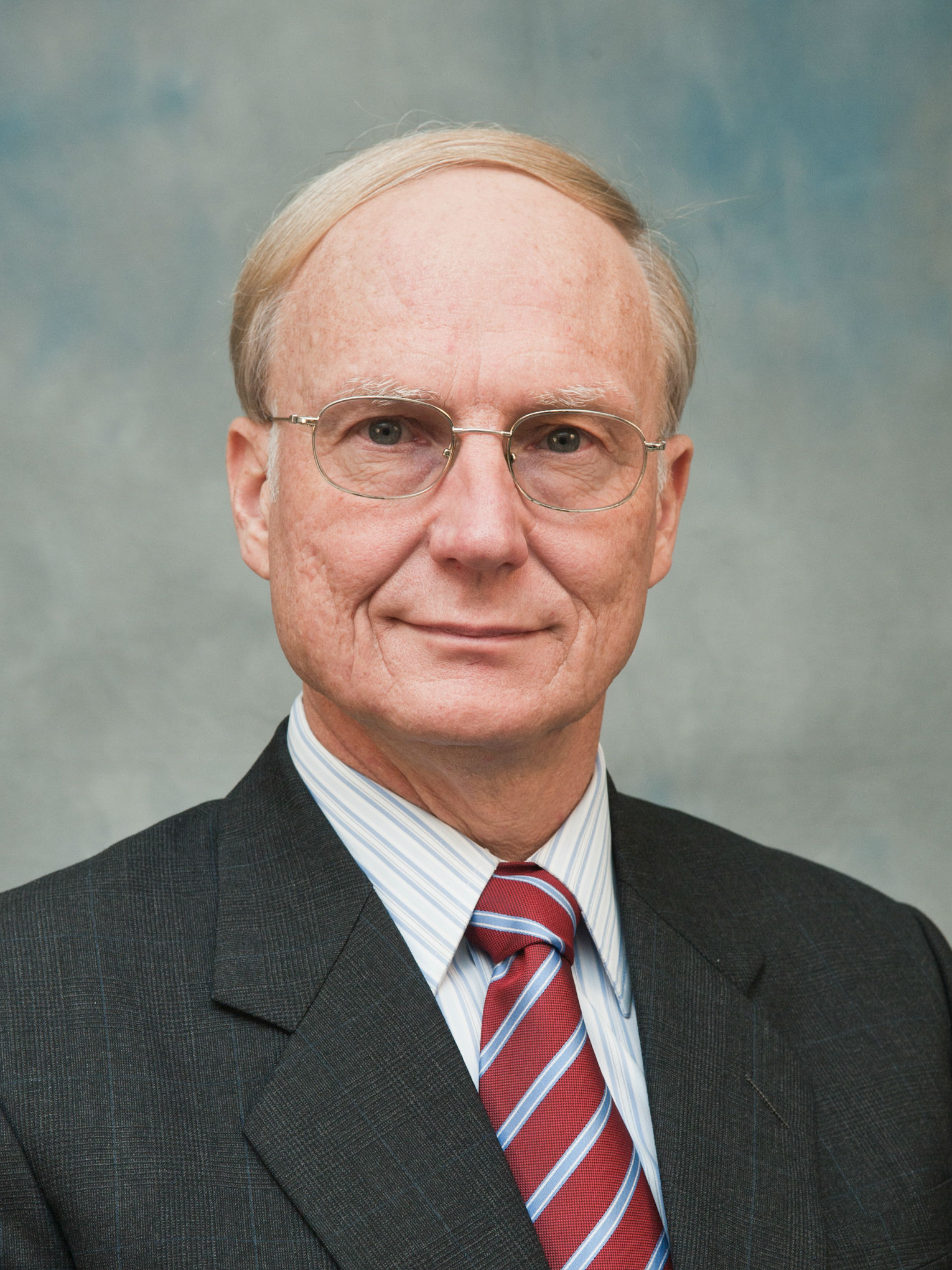 Dr. Edward G. Tiedemann, Jr. is a Qualcomm Fellow and a Senior Vice President of Engineering of Qualcomm Technologies, Inc. He leads Qualcomm’s worldwide standardization and industry organization activities. Dr. Tiedemann was instrumental in the design and development of the TIA/EIA/IS-95 CDMA system, also called cdmaOne™. He led Qualcomm and much of the industry’s efforts in the design and development of the third-generation cdma2000® system. Dr. Tiedemann holds over 200 US patents and has participated in many papers, conference lectures, and industry panels. He is Chairman of the Board of the Open Connectivity Foundation, and sits on the board of several other industry organizations. He is interested in multiple topics in communications including 5G, IoT, and V2x.
Dr. Edward G. Tiedemann, Jr. is a Qualcomm Fellow and a Senior Vice President of Engineering of Qualcomm Technologies, Inc. He leads Qualcomm’s worldwide standardization and industry organization activities. Dr. Tiedemann was instrumental in the design and development of the TIA/EIA/IS-95 CDMA system, also called cdmaOne™. He led Qualcomm and much of the industry’s efforts in the design and development of the third-generation cdma2000® system. Dr. Tiedemann holds over 200 US patents and has participated in many papers, conference lectures, and industry panels. He is Chairman of the Board of the Open Connectivity Foundation, and sits on the board of several other industry organizations. He is interested in multiple topics in communications including 5G, IoT, and V2x.
Prior to becoming involved with terrestrial wireless communications, Dr. Tiedemann was involved with numerous commercial and military satellite systems. From 1977 to 1988, Dr. Tiedemann was at MIT Lincoln Laboratory, where he worked on mmWave satellite communications systems.
Dr. Tiedemann holds the Ph.D. degree from MIT where he worked in the areas of queueing theory and communications networks. He holds the Master of Science degree from Purdue University and a Bachelor of Science degree from Virginia Polytechnic Institute and State University (Va Tech).
Dr. Tiedemann is past chairman of the Advisory Board of the College of Engineering at Virginia Polytechnic Institute and State University (Va Tech). He currently sits on the Advisory Board of the Purdue University School of Electrical and Computer Engineering. Dr. Tiedemann was General Chair of GLOBECOM 2015. He is also a member of the Board of Overseers of the Peabody Essex Museum.
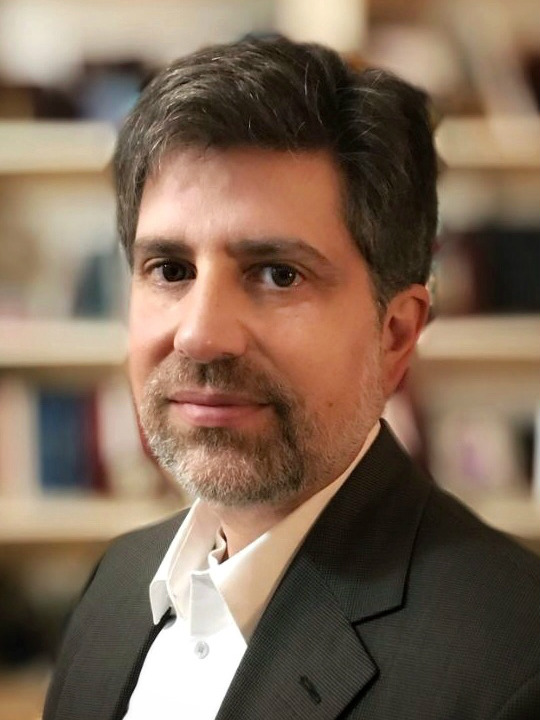 Dr. Anthony A. (Tony) Triolo serves Chief Scientist and Senior Manager at Perspecta Labs and is a member of the Executive Committee of the National Spectrum Consortium (NSC). As Chief Scientist, Dr. Triolo is responsible for programs related to custom uses of commercial cellular equipment and other high performance signal processing programs. He is currently Principal Investigator for the NSC Cellular Range Telemetry effort, where Perspecta Labs is developing appliques that allow COTS LTE equipment to be used to provide aeronautical telemetry service to aircraft travelling at speeds up to Mach 2. He is responsible for the Device to Device for Public Safety (DDPS) effort, where his team is developing an open source standards-based implementation of 3GPP Proximity Services (ProSe) to enable first responders to communicate with each other when cellular infrastructure is down. Dr. Triolo is also leading several other efforts to adapt cellular equipment for operation in contested tactical environments. Over the past 20 years, Dr. Triolo has provided leadership in many wireless technology areas, such as propagation measurement and modeling, spectrum management systems, dynamic spectrum access systems, and distributed and multi-antenna signal processing.
Dr. Anthony A. (Tony) Triolo serves Chief Scientist and Senior Manager at Perspecta Labs and is a member of the Executive Committee of the National Spectrum Consortium (NSC). As Chief Scientist, Dr. Triolo is responsible for programs related to custom uses of commercial cellular equipment and other high performance signal processing programs. He is currently Principal Investigator for the NSC Cellular Range Telemetry effort, where Perspecta Labs is developing appliques that allow COTS LTE equipment to be used to provide aeronautical telemetry service to aircraft travelling at speeds up to Mach 2. He is responsible for the Device to Device for Public Safety (DDPS) effort, where his team is developing an open source standards-based implementation of 3GPP Proximity Services (ProSe) to enable first responders to communicate with each other when cellular infrastructure is down. Dr. Triolo is also leading several other efforts to adapt cellular equipment for operation in contested tactical environments. Over the past 20 years, Dr. Triolo has provided leadership in many wireless technology areas, such as propagation measurement and modeling, spectrum management systems, dynamic spectrum access systems, and distributed and multi-antenna signal processing.
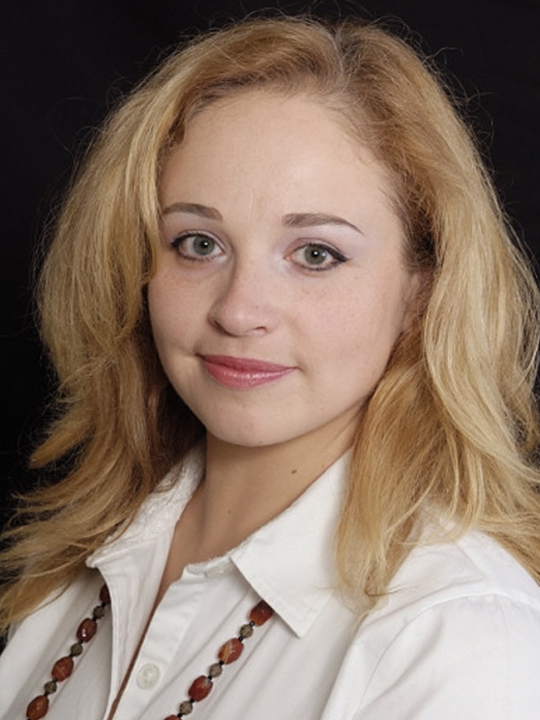 Ms. Julia Andrusenko (This email address is being protected from spambots. You need JavaScript enabled to view it.) received her bachelor's and master's degrees in electrical engineering in 2002 from Drexel University, Philadelphia, PA. She is a senior communications engineer at APL and is the Chief Engineer of the Tactical Wireless Systems group of APL. Ms. Andrusenko has an extensive background in communications theory, wireless networking, satellite communications, Radio Frequency (RF) propagation prediction, communications systems vulnerability, computer simulation of communications systems, evolutionary computation, genetic algorithms/programming, MIMO, and millimeter wave technologies. She also has a substantial experience developing electronic warfare methodologies for various advanced commercial communications systems and military data links. Ms. Andrusenko is a published author of many technical papers and has recently co-authored a book titled “Wireless Internetworking: Understanding Internetworking Challenges” through Wiley/IEEE Press. Ms. Andrusenko is a member of the IEEE Communications Society.
Ms. Julia Andrusenko (This email address is being protected from spambots. You need JavaScript enabled to view it.) received her bachelor's and master's degrees in electrical engineering in 2002 from Drexel University, Philadelphia, PA. She is a senior communications engineer at APL and is the Chief Engineer of the Tactical Wireless Systems group of APL. Ms. Andrusenko has an extensive background in communications theory, wireless networking, satellite communications, Radio Frequency (RF) propagation prediction, communications systems vulnerability, computer simulation of communications systems, evolutionary computation, genetic algorithms/programming, MIMO, and millimeter wave technologies. She also has a substantial experience developing electronic warfare methodologies for various advanced commercial communications systems and military data links. Ms. Andrusenko is a published author of many technical papers and has recently co-authored a book titled “Wireless Internetworking: Understanding Internetworking Challenges” through Wiley/IEEE Press. Ms. Andrusenko is a member of the IEEE Communications Society.
 Dr. Cherita Corbett is the Chief Scientist for the Communication and Networking Systems Group at Johns Hopkins University Applied Physics Laboratory. She guides research and development strategy and activities focused on resilient communications for military operations and critical infrastructure. Her current research interests include: secure mobile technologies, secure tactical communication systems, and insider threat protection. Prior to joining APL, Dr. Corbett was a Senior Computer Scientist at SRI International where she performed research on self-healing cellular networks, vehicular security, and IoT security. She also provided programmatic support to the Cyber Security Division of DHS S&T in the area of mobile technology. She has published over 30 technical manuscripts and holds a U.S. patent in cyber security. She holds a Ph.D. in Electrical & Computer Engineering from Georgia Institute of Technology.
Dr. Cherita Corbett is the Chief Scientist for the Communication and Networking Systems Group at Johns Hopkins University Applied Physics Laboratory. She guides research and development strategy and activities focused on resilient communications for military operations and critical infrastructure. Her current research interests include: secure mobile technologies, secure tactical communication systems, and insider threat protection. Prior to joining APL, Dr. Corbett was a Senior Computer Scientist at SRI International where she performed research on self-healing cellular networks, vehicular security, and IoT security. She also provided programmatic support to the Cyber Security Division of DHS S&T in the area of mobile technology. She has published over 30 technical manuscripts and holds a U.S. patent in cyber security. She holds a Ph.D. in Electrical & Computer Engineering from Georgia Institute of Technology.
 Dr. Ashutosh Dutta is currently Senior Wireless Communication Research Scientist at Johns Hopkins University Applied Physics Labs (Johns Hopkins APL). Most recently he served as Principal Member of Technical Staff at AT&T Labs in Middletown, New Jersey. His career, spanning more than 30 years, includes Director of Technology Security and Lead Member of Technical Staff at AT&T, CTO of Wireless at a Cybersecurity company NIKSUN, Inc., Senior Scientist in Telcordia Research, Director of Central Research Facility at Columbia University, adjunct faculty at NJIT, and Computer Engineer with TATA Motors. He has more than 90 conference and journal publications, three book chapters, and 30 issued patents. Ashutosh is co-author of the book, titled, “Mobility Protocols and Handover Optimization: Design,Evaluation and Application,” published by IEEE and John & Wiley that has recently been translated into Chinese Language. Ashutosh served as the chair for IEEE Princeton / Central Jersey Section, Industry Relation Chair for Region 1 and MGA, Pre-University Coordinator for IEEE MGA and vice chair of Education Society Chapter of PCJS. He co-founded the IEEE STEM conference (ISEC) and helped to implement EPICS (Engineering Projects in Community Service) projects in several high schools. Ashutosh currently serves as the Director of Industry Outreach for IEEE Communications Society and is the founding co-chair for IEEE Future Networks initiative. He also serves as IEEE Communications Society’s Distinguished Lecturer for 2017-2018. He was recipient of the prestigious 2009 IEEE MGA Leadership award and 2010 IEEE-USA professional leadership award. Ashutosh obtained his BS in Electrical Engineering from NIT Rourkela, India, MS in Computer Science from NJIT, and Ph.D. in Electrical Engineering from Columbia University under the supervision of Prof. Henning Schulzrinne. Ashutosh is a senior member of IEEE and ACM.
Dr. Ashutosh Dutta is currently Senior Wireless Communication Research Scientist at Johns Hopkins University Applied Physics Labs (Johns Hopkins APL). Most recently he served as Principal Member of Technical Staff at AT&T Labs in Middletown, New Jersey. His career, spanning more than 30 years, includes Director of Technology Security and Lead Member of Technical Staff at AT&T, CTO of Wireless at a Cybersecurity company NIKSUN, Inc., Senior Scientist in Telcordia Research, Director of Central Research Facility at Columbia University, adjunct faculty at NJIT, and Computer Engineer with TATA Motors. He has more than 90 conference and journal publications, three book chapters, and 30 issued patents. Ashutosh is co-author of the book, titled, “Mobility Protocols and Handover Optimization: Design,Evaluation and Application,” published by IEEE and John & Wiley that has recently been translated into Chinese Language. Ashutosh served as the chair for IEEE Princeton / Central Jersey Section, Industry Relation Chair for Region 1 and MGA, Pre-University Coordinator for IEEE MGA and vice chair of Education Society Chapter of PCJS. He co-founded the IEEE STEM conference (ISEC) and helped to implement EPICS (Engineering Projects in Community Service) projects in several high schools. Ashutosh currently serves as the Director of Industry Outreach for IEEE Communications Society and is the founding co-chair for IEEE Future Networks initiative. He also serves as IEEE Communications Society’s Distinguished Lecturer for 2017-2018. He was recipient of the prestigious 2009 IEEE MGA Leadership award and 2010 IEEE-USA professional leadership award. Ashutosh obtained his BS in Electrical Engineering from NIT Rourkela, India, MS in Computer Science from NJIT, and Ph.D. in Electrical Engineering from Columbia University under the supervision of Prof. Henning Schulzrinne. Ashutosh is a senior member of IEEE and ACM.
 Mr. Jared Everett is a senior wireless communications research engineer in the Wireless Cyber Capabilities group at the Johns Hopkins University Applied Physics Laboratory (Johns Hopkins APL). Since joining APL in 2009, his research has focused broadly on the use of cellular technologies for defense and national security applications. He has a deep knowledge of LTE and emerging 5G standards, specializing in cellular air interfaces and end-to-end systems. He is a co-author of the book, “Wireless Networking: Understanding Internetworking Challenges,” published by Wiley/IEEE Press. His current research interests include innovative approaches to spectrum sharing in 5G networks. Jared holds M.S. and B.S. degrees in electrical engineering from North Carolina State University. He also holds a B.A. degree in music.
Mr. Jared Everett is a senior wireless communications research engineer in the Wireless Cyber Capabilities group at the Johns Hopkins University Applied Physics Laboratory (Johns Hopkins APL). Since joining APL in 2009, his research has focused broadly on the use of cellular technologies for defense and national security applications. He has a deep knowledge of LTE and emerging 5G standards, specializing in cellular air interfaces and end-to-end systems. He is a co-author of the book, “Wireless Networking: Understanding Internetworking Challenges,” published by Wiley/IEEE Press. His current research interests include innovative approaches to spectrum sharing in 5G networks. Jared holds M.S. and B.S. degrees in electrical engineering from North Carolina State University. He also holds a B.A. degree in music.
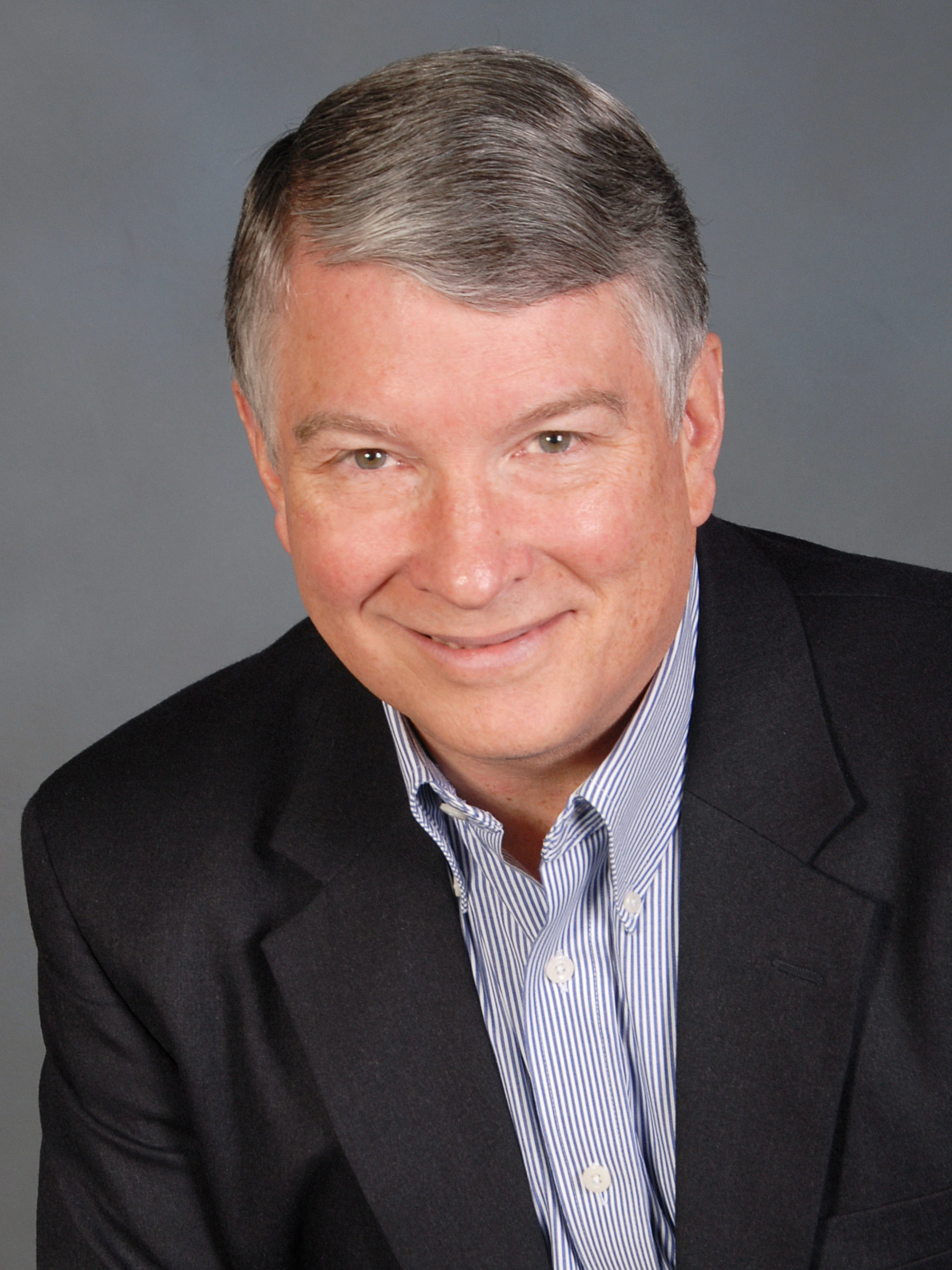 Mr. Douglas Holly, Principle, Eagle Management Group
Mr. Douglas Holly, Principle, Eagle Management Group
Doug brings a broad range of telecommunications, business leadership and management skills with a particular focus on project management, operational improvement and M&A. He currently heads up Eagle Management Group a consulting firm that provides general management, project management and strategic planning to improve operational performance. EMG also provides M&A selection, diligence support and integration services to businesses. He is a director of the Washington Section and chair its chapter of the Communications Society and also chair of the joint Washington/Northern Virginia chapter of the TEMS. He was finance chair for the IEEE GLOBECOM 2007 and 2016.
Doug holds a bachelor's and master's dress in electrical engineering from Rensselaer Polytechnic Institute.
 Amy Howard is the Branch Office Administrator for the Communications Systems Branch in the Asymmetric Operations Sector at Johns Hopkins University Applied Physics Lab (APL). Amy joined APL in May, 2015 and is in her 2nd year as co-chair for the 5G Workshop. She has over 25 years of professional office and event coordination experience.
Amy Howard is the Branch Office Administrator for the Communications Systems Branch in the Asymmetric Operations Sector at Johns Hopkins University Applied Physics Lab (APL). Amy joined APL in May, 2015 and is in her 2nd year as co-chair for the 5G Workshop. She has over 25 years of professional office and event coordination experience.
 Carolyn Stallings-Little is the Group Office Administrator for the Communication and Networking Systems Group at Johns Hopkins University’s Applied Physics Laboratory (APL). She joined APL in March, 2017. She has over 25 years of professional administrative experience.
Carolyn Stallings-Little is the Group Office Administrator for the Communication and Networking Systems Group at Johns Hopkins University’s Applied Physics Laboratory (APL). She joined APL in March, 2017. She has over 25 years of professional administrative experience.
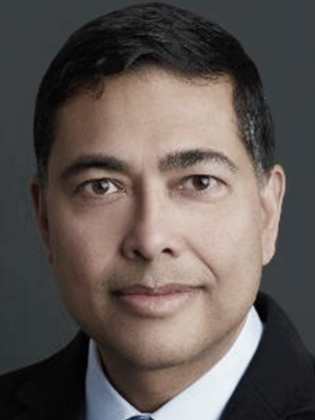
Mr. Narendra Mangra is a wireless mobility advisor at GlobeNet. His diverse experience extends across the wireless mobility ecosystem and mobile network deployment lifecycle within academia, government and industry. He is an Adjunct Professor at the Volgeneau School of Engineering at the George Mason University. Narendra is also the Applications and Services Co-Chair and Summer School Chair for IEEE Networks. He leads the Smart Cities roadmap development initiative and recurring industry focused educational sessions for Young Professionals.
Narendra has extensive consulting experience in the mobile satellite and cellular communications, public safety communications, information technology, higher education, and federal & local government sectors. He holds an MSEE and BSEE from Polytechnic University, MBA from the Robert H. Smith School of Business at the University of Maryland, and a Project Management Professional (PMP) Certificate. His current interests include the 5G ecosystem, Smart Cities and interconnected ecosystems.
 Mr. Oscar Somerlock joined the Applied Physics Laboratory in 2014, where he is currently a member of the Senior Technical Staff. Prior to joining APL, he worked in the cellular industry for more than 20 years holding engineering and technical leadership positions at Samsung, Motorola, and Qualcomm. He also founded and served as President of Comware, Inc. He has been awarded patents in digital beamforming and wireless networking. Oscar holds an M.S. degree in Electrical and Computer Engineering from the Johns Hopkins University and MBA from the University of Maryland.
Mr. Oscar Somerlock joined the Applied Physics Laboratory in 2014, where he is currently a member of the Senior Technical Staff. Prior to joining APL, he worked in the cellular industry for more than 20 years holding engineering and technical leadership positions at Samsung, Motorola, and Qualcomm. He also founded and served as President of Comware, Inc. He has been awarded patents in digital beamforming and wireless networking. Oscar holds an M.S. degree in Electrical and Computer Engineering from the Johns Hopkins University and MBA from the University of Maryland.




